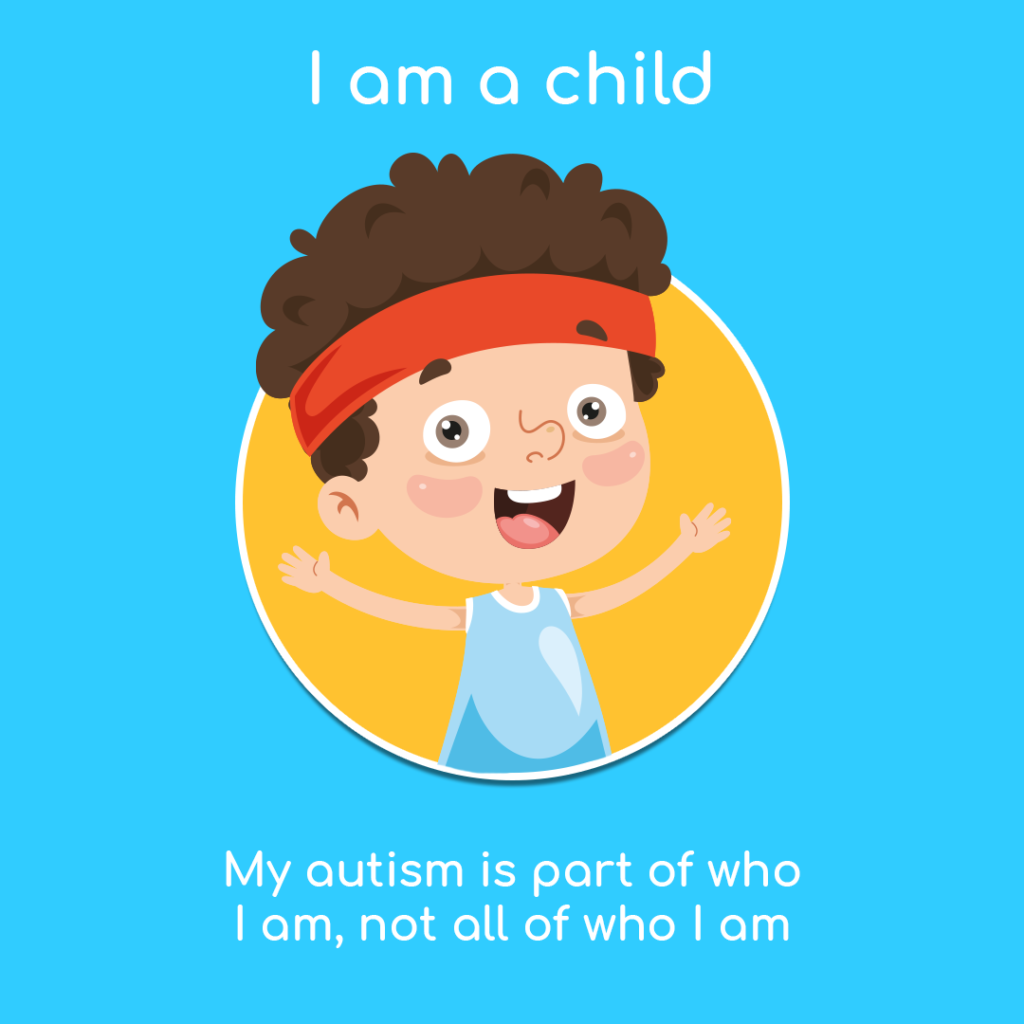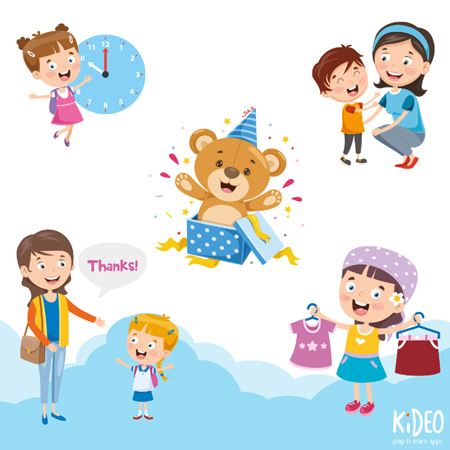While replicating social skills learning without the help of classmates and peers may seem tricky, these easy activities focused on listening, interacting, and storytelling will keep your kids socially engaged all day long even at home.
By Jenna Autuori Dedic
Social distancing is one of the most important things we can be doing to do our part during the COVID-19 pandemic. Unfortunately, social distancing isn’t all that, well, social. Children naturally learn to socialize by being physically present amongst other children. When you take away their peers, how are they going to absorb the social skills needed that will guide them from kindergarten to college
“Everyone can learn reading, writing, and math from home,” says Jaclyn Shlisky, a clinical psychologist and mom of three, including a kindergartener who’s now being homeschooled. “While it’s not ideal, it is doable, but social skills come naturally for kids through modeling and the experience they get when they’re in a classroom setting and on a playground or interacting with other adults, like teachers.” Around the kindergarten age, social skills become the building blocks for what kids rely on to help them navigate the world around them. These are a few of the big ones children learn in the classroom environment:
- How to deal with disappointment
- Showing emotion
- How to respond to people (other than immediate family)
- Taking turns
- Making eye contact
- Listening without interrupting
- Playing fairly
- Sharing
- Accepting winning or losing (how to be a “good sport”)
- Using appropriate manners and greetings
While we’re not able to do all these things in isolation, we can try to pick up the slack of what our kids are missing by engaging in targeted play at home that can be just as beneficial to their social awareness. “Currently, we are only able to socialize with people outside of social distancing circles over the phone, through text, or in a video chat,” says Francyne Zeltser, Psy.D., a child psychologist on Long Island, New York. “Something as simple as having a virtual playdate with a classmate can teach your child so much—she has to make eye contact, she has to wait her turn, and she has to demonstrate the body language to show that she is listening. Just because we’re home and can’t physically attend social engagements, we can turn our day-to-day in-person and virtual interactions into teachable moments,” Dr. Zeltser says.
We’ve done the homework for you and created a list of social skills activities you can do with your kids while you’re stuck at home. Give them a try and have some fun with it too.
1. Perspective Taking: This is an easy activity all about identifying the feelings and thoughts of others and you can do it when you are watching TV or a movie with your child, suggests Dr. Shlisky. Press pause and say to your child, “How do you think that he or she feels right now? What are they thinking?” Let your child respond and then you can also provide your own answer, “I think they feel scared because they are being chased” or “I think they feel happy because I see the rain is stopping and they can go outside.” “It’s important to let your child practice identifying the thoughts and feelings of others,” Dr. Shlisky adds. You can also do this while doing role play activities or acting games. You can have a puppet show and have the puppets talk to each other about their feelings and thoughts. The Good Dinosaur, The Incredibles and Inside Out are great film options for talking through emotions and feelings.
2. Character Play: Get out a bunch of character toys, like Peppa Pig or Barbie dolls, and have them pretend to talk to each other. Maybe you have a toy kitchen and your characters can pretend to bake a cake and have a pretend birthday party together. Use language like, “what do you say to a friend when it’s their birthday?” Then listen to your child’s answer and respond, “That’s right, we say, happy birthday! I hope you have a great day today!” (If your child is someone who jumps to the front of the line to help blow out the candles, take this time to role play with the character toys how the birthday boy or girl feels when that happens. “Use this game as a way to work on the things you feel like your child needs a little extra help with,” Dr. Shlisky adds.
- RELATED: 19 Fun Learning Activities for Kids
3. Taking Turns: Even for those who only have one child, you can still practice taking turns with your children. Take out a coveted toy that maybe only gets used on special occasions or come up with a unique item that your kids always want to touch, like the family Polaroid camera. You can give the item to one child and say they get to use it for five minutes and then set a timer and switch it over to the other siblings when their turn is over.
4. Playing Board Games: While playing board games is probably the most obvious way to practice and encourage social skills, it’s really because it’s the best bang for your buck. “Playing a game requires patience, being able to wait and take turns, negotiation about who goes first (or what character piece or color you are), agreeing to and sticking to the rules, and being a good sport whether you win or lose,” says Dr. Shlisky. Some of the most popular games for optimal social skill learning are Candy Land, Jenga, Apples To Apples Jr., and Connect 4, but card games like Go Fish and UNO are also excellent academic games too. Dr. Shlisky advises making sure the game is age appropriate for your child (the age requirement on the box is really there for a reason!)—if it is too hard or has too many instructions, your child will get bored and give up and they won’t absorb the skills you really want them to get from playing the game in the first place. It’s best to keep it simple and fun.
5. FaceTime or Virtual Playdates: It’s a novel concept to “play” with a friend over your phone or a computer, but lots of social activities can be done simultaneously from inside your own homes and can give the same sense of “togetherness” your children are craving. Coloring and arts and crafts are ways that your child can do something at the same time as her friend. They can discuss what they’re working on with one another and will likely have side conversations, too. “The skill people are developing the most while they’re social distancing and trying to keep up with relationships is proper communication,” says Dr. Zeltser. “Most of us haven’t previously been in a situation where we had to rely solely on our communication skills to be present. When our children are on playdates at the park or during recess, they can be involved in group play without fully attending to or engaging with their peers; they can even be zoning out during conversations,” she says. “Distance learning and virtual communication teaches children how to take turns talking, how to ask questions in order to be involved in conversations, and how to consistently use greetings like ‘hello’ and ‘goodbye.'”
6. Scavenger Hunts: These can be done virtually with your child and his friend at his home or just with your child at home. Instead of telling your child to find items that are scattered throughout your house, come up with a riddle that your child has to solve with his friend. Though it may take a little work on your end, your child and his buddy will have a chance to work on their cooperation skills with this game. “This is a great opportunity for your child to really work together with another person and come up with an answer as a team,” says Dr. Zeltser. An example riddle might be, “I come in different shapes and sizes, can be found in the kitchen or the bathroom, and can be adjusted to be hot or cold, what am I?” (Answer is a sink!)
7. ‘Would You Rather’ Game: This is a silly game that lets kids laugh and let loose while using their imagination and creativity. Your child needs to come up with two goofy or outlandish statements, making you (or a friend who is playing virtually) choose an answer no matter how ridiculous the options. This game brings on the giggles but also encourages children to think outside the box and ask follow up questions. You never know what topic or feelings you might start discussing when you play this game! (Some favorites to start your kid off that could have interesting follow-up chats after the game is over are, “Would you rather be able to fly or be invisible?” or “Would you rather live in the past or in the future?”)
8. Read The Color Monster: In this popular book feelings are discussed as colors and each color gets a jar where it’s kept so the monster can feel more at ease with all his mixed emotions. When you get to the page of the colors organized in jars, try discussing each color (yellow is happiness, blue is sadness, green is calm, for example) and saying what has made you feel “yellow” that day and then what made you feel “blue” that day. This will not only make it easier for your child to discuss his feelings (maybe he was scared to talk about something he heard on TV) but it can show your child that it’s okay to recognize and feel many different emotions in one day—and that adults have the same range of emotions, too. (If your child was having a particularly rough day, this is usually a good time to take The Color Monster out at bedtime.)
9. Problem Solving with Props: This one may take some planning, but you need to get props like paper clips, plastic cups, cotton balls, tape, popsicle sticks, sticky notes, and paper straws (you can substitute for anything you don’t have or things you do have around the house.) Then direct your child to solve problems with the items they have in front of them. Some problem solving prompts can be: devise a slide for mini figures, create a jump ramp for cars, and build the highest tower you can. See where their imagination takes them! (Try this on a virtual playdate and see what your child and her buddy come up with on their own.)
10. Balloon Keep-Up: You need a balloon for this one. Encourage your child to keep a balloon from falling to the ground without catching or holding it. (Add in some counting practice. Tell them to count how many times they have to keep it from falling before it hits the floor.) This is good to play with a sibling as they have to work together to keep the balloon safe.
11. Telling Short Stories: Create a stack of flashcards with story topics you’d like to discuss with your child. (Some ideas that might work: favorite summer memory, favorite holiday, the best birthday party idea, or a dream you once had.) The skills practiced with this activity include listening, following directions, patience, taking turns, ignoring distractions, cooperating and showing empathy. Next you pick a card, set a timer (two to five minutes) and tell your story. (Children who have trouble staying on topic, keeping focus or give too many details may benefit from this activity.) After your child tells her story, show you were listening by summarizing what she said and ask for clarifications to help her stay on track with her topic. Now is also the time to show your child how to show empathy (for example, “That must have been disappointing for you” or “I can see your feelings may have been hurt when your friend said that” if it fits the story your child told you). If your child needs a little more excitement to get started, do this through playing telephone cups for added fun.
12. Play Restaurant: This is a great way to work on manners. Have your child be the waiter and you be the customer. Show your child how to order food by saying please, and saying excuse me if he burps at the table. (Make sure you switch roles.)
13. Bookworm Workout: This activity gets bonus points because it’s going to encourage your child to be reading at all times of the day (forget reading only at bedtime!). Pick a book with a word that’s often repeated, like The Cat In The Hat or Green Eggs And Ham, and whenever the word comes up in the story (hat or eggs) your child has to do jumping jacks or push ups! This will encourage your kid to really be paying attention and listening—not to mention the physical activity too.
14. Show and Tell: Dr. Zeltser suggests using this as the opportunity for your children to take turns showing off and talking about special items or people in their home that they would otherwise not be able to bring to school or on a playdate. Examples of unique home show and tells may include furniture items (“this is my new bed” or “this is my pillow tent”), precious family photos (“this is a picture from my first birthday” or “this is a photo of my great grandfather that I was named after”) and family members (“my show and tell today is my baby sister who is only 3 months old” or “today my show and tell is my older brother who is home from college”).



